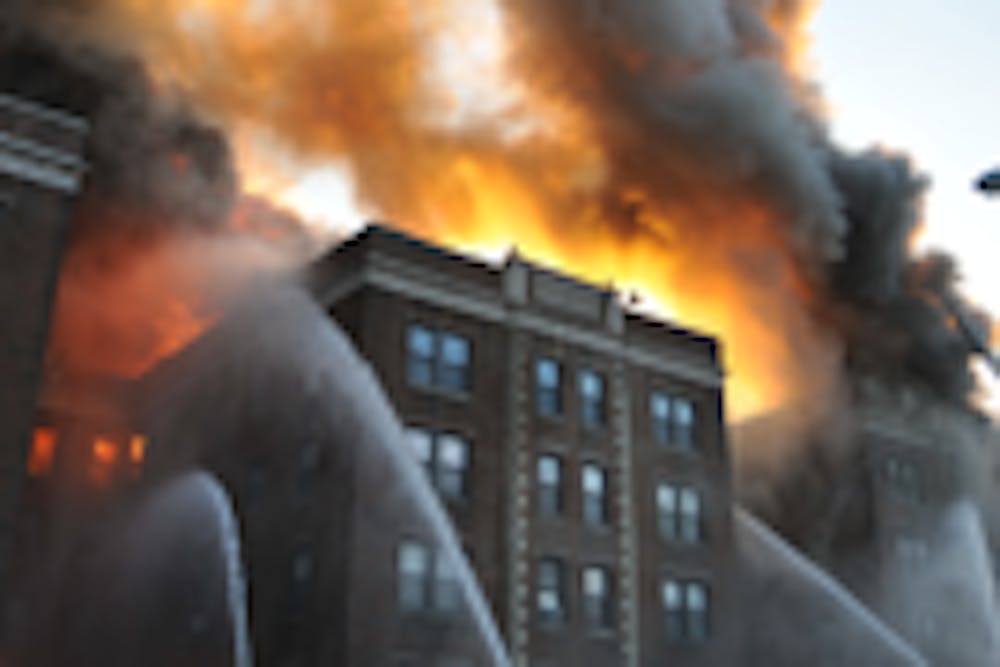In light of the Jan. 10 five-alarm fire at the Windermere Court Apartments at 48th and Walnut streets— which sent up a thick plume of smoke visible from campus — the Division of Public Safety is not concerned about Penn’s fire preparedness and prevention strategies.
Philadelphia fire marshals are still investigating the building and have not officially announced the cause of the fire. However, the building has been deemed unsafe and structurally unsound, according to Philadelphia Fire Department Executive Fire Chief Daniel Williams.
Philadelphia Fire Commissioner Lloyd Ayers said in a press conference on the day of the incident that the flames traveled up shafts in the building to its roof. Because the apartment supported a cockloft-style roof, the fire spread quickly to different parts of the building.
A cockloft is structural space in a building above the ceiling of the top floor and below the roof’s rafters that connects adjacent rooms. According to Eugene Janda, chief of Fire and Emergency Services at Penn, cocklofts generally contain wiring, heating and plumbing fixtures.
Older buildings in the Northeast tend to have wider voids, and these voids accelerate the fire’s spread, according to Philadelphia Fire Deputy Chief James Bonner.
In modern construction, cinderblock walls with a double layer of sheet rock help to prevent travel of heat and flames from one unit to the other, Bonner said.
“The cockloft is where things happen — where the fire can take off,” Williams said.
Janda said although some buildings on Penn’s campus contain cocklofts, they are constructed from noncombustible materials, such as stone, iron and steel high beams, as opposed to wooden rafters.
Fire sprinkler systems have been installed in all living areas, especially fraternity and sorority houses, which tend to be older buildings with wooden cocklofts, according to Janda. The sprinkler heads serve as heat detectors — once they detect a certain temperature, they open up with water to repel the flames. According to Janda, the sprinklers are 97 percent effective.
Ninety percent of fires in the country are extinguished by sprinkler systems, Williams said. Pennsylvania state law requires all buildings to be up to fire code and have sprinklers.
Williams said it is a good idea for buildings to have fire escapes that are separate from the building itself.
Janda noted that other fire-prevention techniques exist on campus. In the high rises, the fire-exit doors are constructed from fire-rated material, meaning they are primed to resist flames for a certain amount of time. A fire-resistance rating measures the thickness of constructional material and the duration it can withstand a fire.
Janda also noted that residential advisors serve as emergency coordinators in residential buildings. In addition, there is a manual fire alarm pull station five feet from every exit in any campus building, Janda explained.
He also noted that Penn’s campus has experienced several roof fires, but none resulted in the loss of a building.



